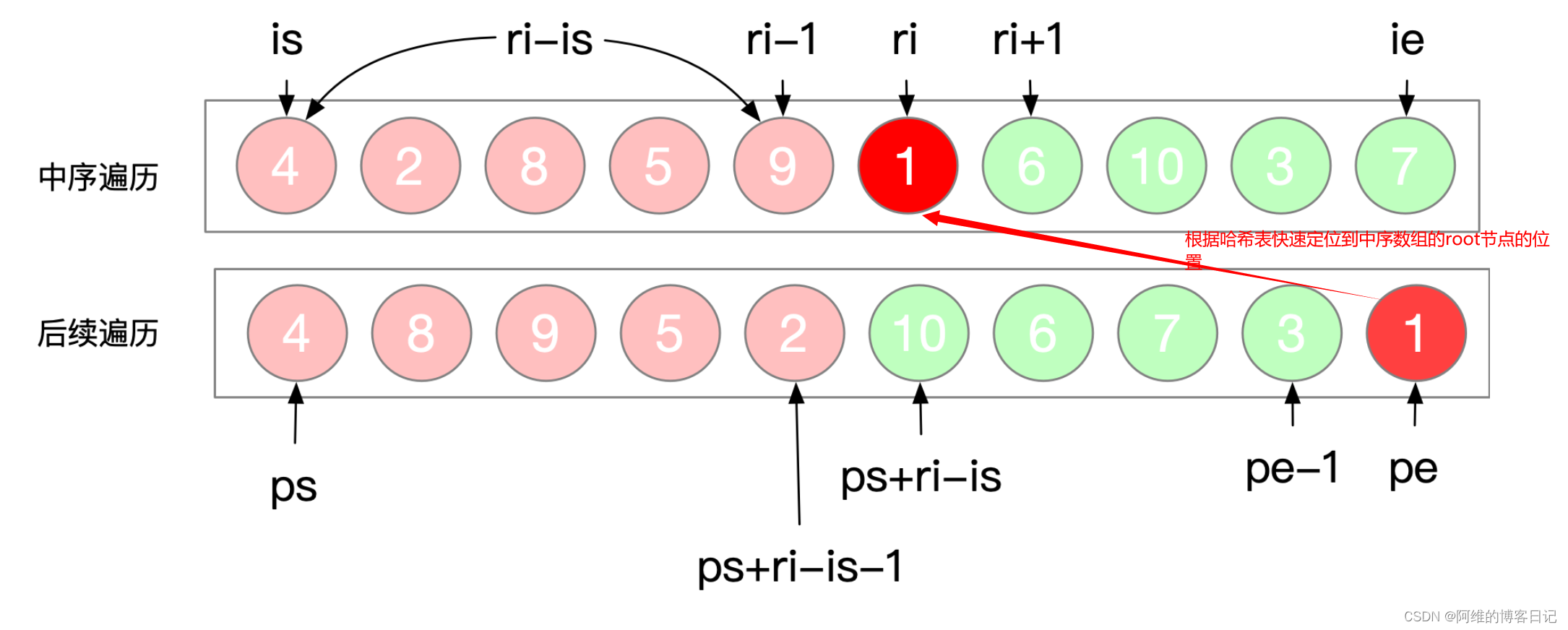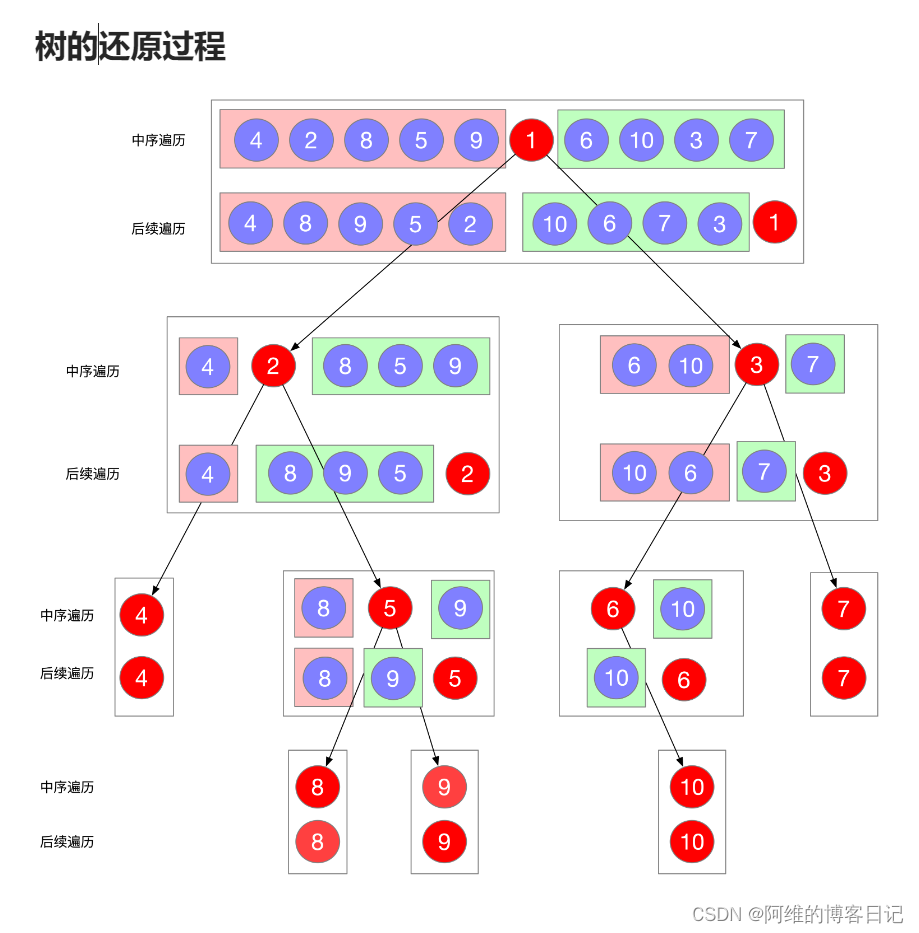leetcode106从中序与后序遍历序列构造二叉树
本文针对原链接题解的比较晦涩的地方重新进行说明解释
原题解链接:https://leetcode.cn/problems/construct-binary-tree-from-inorder-and-postorder-traversal/solutions/50561/tu-jie-gou-zao-er-cha-shu-wei-wan-dai-xu-by-user72
1.解题关键
后序遍历序列的最后一个元素一定是root节点,中序遍历序列里面,root左边的是左子树,root节点右边的是右子树,接着可以递归处理。
依次把数组分为
2.思路
先使用哈希表记录整个中序序列的数组元素与下标的关系,目的是为了后续直接获取后序遍历序列vector最后一个元素之后直接得到中序里面的root节点的下标,加快算法速度!
3.变量名缩写与英文单词对应关系
| 变量名缩写 | 变量名单词 |
|---|---|
| is | inorder_start(中序遍历数组-起始下标) |
| ie | inorder_end(中序遍历数组-末尾下标) |
| ps | poster_start(后序遍历数组-起始下标) |
| pe | poster_end(后序遍历数组-末尾下标) |
| ri | root_index(根节点的下标) |
4.算法思路图解


5.代码
class Solution {
public:
unordered_map<int,int> map;
vector<int>* post;
TreeNode* buildTree(vector<int>& inorder, vector<int>& postorder) {
for(int i=0;i<inorder.size();++i){
map[inorder[i]]=i;
}
post=&postorder;
TreeNode* root=dfs(0,inorder.size()-1,0,post->size()-1);
return root;
}
TreeNode* dfs(int is,int ie,int ps,int pe){
if(ie<is||pe<ps){
return nullptr;
}
int root = (*post)[pe];
int ri=map[root];
TreeNode* node=new TreeNode(root);
node->left=dfs(is,ri-1,ps,ri-is-1+ps);
node->right=dfs(ri+1,ie,ri-is+ps,pe-1);
return node;
}
};
原文地址:https://blog.csdn.net/weixin_46028606/article/details/136804694
免责声明:本站文章内容转载自网络资源,如本站内容侵犯了原著者的合法权益,可联系本站删除。更多内容请关注自学内容网(zxcms.com)!
